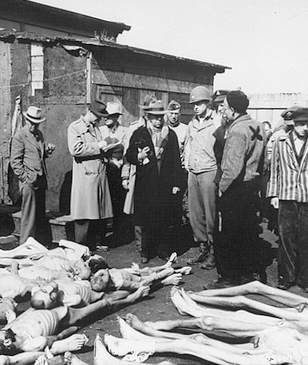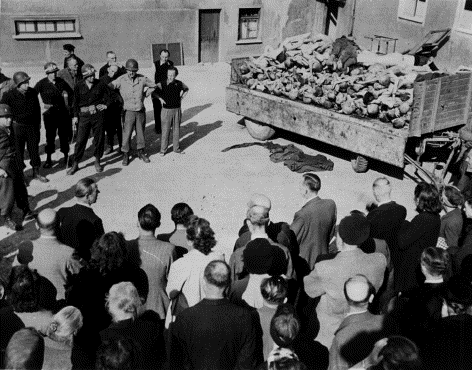Rich SOB Says Treatment Of Rich Like The Holocast
|
Rich SOB Says Treatment Of Rich Like the Holocast
Jetackuu said: » Kara: you know you can't bring facts in this thread... Asura.Kingnobody said: » Jetackuu said: » Kara: you know you can't bring facts in this thread... Edit: The blatantly false thing can be added to about 90% of what you prattle on about too. Lakshmi.Flavin said: » Asura.Kingnobody said: » Jetackuu said: » Kara: you know you can't bring facts in this thread... Edit: The blatantly false thing can be added to about 90% of what you prattle on about too. Please take a moment to look at the data more carefully and objectively. Any reaction other than HOLY ***HE MIGHT REALLY BE ON TO SOMETHING! followed by crapping your britches in terror will be ignored. thank you for finding the polling data that supports my analysis. I appreciate all your hard work. Jetackuu said: » Kara: you know you can't bring facts in this thread... Jet the facts she brought in support my argument. Try reading. It's fun and enlightening. Lakshmi.Flavin said: » Asura.Kingnobody said: » Jetackuu said: » Kara: you know you can't bring facts in this thread... Edit: The blatantly false thing can be added to about 90% of what you prattle on about too. Again with the percentages. It is like every post is a poll. Let's break down the thread in percentages. 45% troll / sarcastic/personal attacks 20% serious discussion 35% gifs off topic I'm not trying to stir any pot. It's the truth. Mos isn't a liberal nor does he even really like Obama or the ACA (he's made that pretty clear) but you have your blinders on and anyone says that disagrees with you makes them a dirty liberal out to crush all the evil pubs! You don't really seem to care about much of anything other than just coming in and saying nothing really other than hey liberals! you suck! Then making it seem like they attacked you in the first place even though you were only having a discussion with yourself at the time.
We need some pie charts to represent how serious this thread is.
 Are enough people looking at you yet Fone? lol...

Jetackuu said: » .... there is no evidence of corruption, stop making up scandals! Just think of all those blow dried blonds out of work. Have you no compassion? Shiva.Nikolce said: » Please take a moment to look at the data more carefully and objectively. Any reaction other than HOLY ***HE MIGHT REALLY BE ON TO SOMETHING! followed by crapping your britches in terror will be ignored. thank you for finding the polling data that supports my analysis. I appreciate all your hard work. Selective reading is selective. Nor were you actually looking at the poll I quoted. This entire paper looks at abortion from a it "is murder perspective" to it "is a woman's choice", to "under what circumstances should abortion be legal". I don't care if people think it is murder if they also think it should be legal. Quote: Opinion on abortion has been very stable. Between 1975 and 2012, Gallup has asked the identical question on the legality of abortion more than fifty times. In 1975, 21 percent said abortion should be legal under all circumstances, 54 percent legal only under certain circumstances, and 22 percent illegal in all circumstances. Those responses in Gallup’s May 2013 poll were very similar: 26, 52, and 20 percent, respectively. This constancy of opinion is evident in many questions in this document. EDIT: the polls (all that have been taken over time) show a consistency. Do you think it is murder? Majority say yes. Do you think the choice should be with the woman and her doctor? Majority say yes. Do you think it should be legal (all circumstance,some circumstances, never)? all consistent percentages over time for each area. Bahamut.Kara said: » .... That is not how statistics work. You have to also back up your assumptions with some data or a tested hypothesis that can be applied broadly.... Or journalism in this 21st century for that matter. Garuda.Chanti said: » That is not how the right wing works. Or journalism in this 21st century for that matter. god & sensationalism baby! what else do we need??!?!??!?!?!?! fonewear said: » Journalism you mean talking heads ? Bahamut.Kara said: » Selective reading is selective. It sure is. Bahamut.Kara said: » I don't care if people think it is murder if they also think it should be legal. /sigh I wish how you or I felt about it mattered. My only point and assertion were that pro life numbers are rising. The data you provided clearly supports my concerns. 1995 - 33% 2013 - 48% The separate issue of whether or not they currently think it should be legal is irrelevant to the point I made. You looked at one section of this paper and made up your mind and that the, literally, hundreds of other polls do not matter. Abortion is not a simple subject to discuss and there are a variety of ways to ask questions. This is a pretty comprehensive paper that goes over most of these ways and looks at trends over time. Quote: /sigh I wish how you or I felt about it mattered. My only point and assertion were that pro life numbers are rising. The data you provided clearly supports my concerns. 1995 - 33% 2013 - 48% The separate issue of whether or not they currently think it should be legal is irrelevant to the point I made. You keep assuming that those who think abortion is murder are only pro-life voters. To throw out more numbers:You keep saying pro-life is increasing, statistically. However, what is illustrated in this meta-analysis is that the numbers are not varying beyond margins of error per poll. That is like the study said, remarkably stable for a topic that has two extreme sides. But it seems that the two polarized views don't represent the majority of Americans. It seems to be a combination of both pro-life and pro-choice views: majority view abortion as bad but something that should stay legal up to a certain point. Kara you don't even know what side of the issue I am on.
Roll up and put away your Tom Smykowski Jump to Conclusions game and let's work through this. Don't you know that Kara is arguing just for the sake of arguing?
Asura.Kingnobody said: » Don't you know that Kara is arguing just for the sake of arguing? I think you couldn't be more wrong if you had some sort of electrified wronging machine that made the wrong statement automatically. It's a highly emotionally charged issue and she obviously feels very deeply about it. And she is ignoring your point to present something that you are not arguing about.
That, my friend, is arguing for the sake of arguing. Shiva.Nikolce said: » Asura.Kingnobody said: » Don't you know that Kara is arguing just for the sake of arguing? I think you couldn't be more wrong if you had some sort of electrified wronging machine that made the wrong statement automatically. It's a highly emotionally charged issue and she obviously feels very deeply about it. Emotions and logic together at last. I only judge thing on how it makes me feel Asura.Kingnobody said: » And she is ignoring your point to present something that you are not arguing about. That, my friend, is arguing for the sake of arguing. she's saying that the number of people identifying as one absolute or another are less relevant than the number who think a certain way about the legality and that there are many different aspects of the topic that aren't addressed by those numbers. I would put my money on kara's numbers in regards to the increasing number of PASSIVELY pro-lifers, people who think it's wrong but don't think they have the right to say what's right for someone else. nik even said that, but you argued with him, that's arguing just to argue. pretty sure I made that assertion without pics a few pages back.
I've never heard of hyperbole. Oh wait yea I have.
Quote: It was the only poll you posted and it agreed with what I said lol. In order for us to have a disagreement you would have had to come up with something CONTRARY to what I said. You also stated one poll on pro-life vs. pro-choice out of the 4 available specifically asking that question. A poll that asked abortion questions before that specific question, which was noted. What I see from those trends is people seriously divided on the issue and have been consistently. Quote: Obviously, and I believe that's why you are having such difficulty accepting a simple premise Quote: Bahamut.Kara said: » You keep assuming that those who think abortion is murder are only pro-life voters. No I never did. You are reading too much into what I stated. Quote: and the data supports that statement the other numbers you have posted don't have anything to do with the assertion I made. the numbers YOU are looking at are within the margin of error as to the question of whether or not those polled believe in a woman's rights which is the point you are trying to make. But it's a completely separate topic of discussion from my original point which you have yet to contest effectively. The number of people that are indicating in polls that they are pro life is rising. Your choices are 1.) agree with that simple fact 2.) disagree with it and provide polling data that shows a disparity to the first poll you posted. 3.) continue trying to reshape the argument to fit the numbers that agree with an assertion that is irrelevant to the statement I have made. Pro-life and pro-choice numbers: Yankelovich/Time/CNN looks to be within margin of error. Fox News looks to be within margin of error Gallup looks to be outside of margin of error. PSRA/Newsweek looks to be within the margin of error. I don't see abortion in black and white as some people do. They want us to be pro this anti that. It is a far more complicated. To say hey I'm pro life so no matter what I'm against abortion. And for someone pro choice to say hell yes I want an abortion and I've never considered anything else.
Any reasonable person will understand that under certain conditions your pro or anti could change. |
All FFXIV and FFXI content and images © 2002-2025 SQUARE ENIX CO., LTD.
FINAL FANTASY is a registered trademark of Square Enix Co., Ltd.










